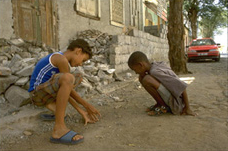| Demographics of Cape Verde | |
|---|---|
 Population pyramid of Cape Verde in 2020 | |
| Population | 596,707 (2022 est.) |
| Growth rate | 1.21% (2022 est.) |
| Birth rate | 18.49 births/1,000 population (2022 est.) |
| Death rate | 5.8 deaths/1,000 population (2022 est.) |
| Life expectancy | 73.75 years |
| • male | 71.41 years |
| • female | 76.15 years |
| Fertility rate | 2.13 children born/woman (2022 est.) |
| Infant mortality rate | 23.53 deaths/1,000 live births |
| Net migration rate | -0.57 migrant(s)/1,000 population (2022 est.) |
| Age structure | |
| 0–14 years | 27.95% |
| 65 and over | 5.48% |
| Sex ratio | |
| Total | 0.95 male(s)/female (2022 est.) |
| At birth | 1.03 male(s)/female |
| Under 15 | 1.01 male(s)/female |
| 65 and over | 0.52 male(s)/female |
| Nationality | |
| Nationality | Cabo Verdean or Cape Verdean |
| Language | |
| Official | Portuguese |
| Spoken | Cape Verde Creole |
Demographic features of the population of Cape Verde include population density, ethnicity, education level, health of the populace, economic status, religious affiliations and other aspects of the population.
Contents
- Population
- Vital statistics
- Registered births and deaths
- Demographic and Health Surveys
- Life expectancy
- Ethnic groups
- Genetics
- Languages
- Religion
- See also
- References
- External links
Cape Verde has about 540,000 inhabitants. A large proportion (236,000) of Cape Verdeans live on the main island, Santiago. [1] Many more live abroad in the Cape Verdean diaspora in mainland Africa, Europe, U.S., Brazil, et cetera.
The archipelago of Cape Verde was first discovered and claimed by Portuguese sailors working for the Portuguese Crown in 1456. Cape Verdeans are West African. Many foreigners from other parts of the world settled in Cape Verde as their permanent country.

The difficulty of survival in a country with few natural resources has historically induced Cape Verdeans to emigrate. In fact, of the more than 1 million people of Cape Verdean ancestry in the world, only a little more than one-third actually live on the islands. Some 500,000 people of Cape Verdean ancestry live in the United States, mainly in New England. Many people of Cape Verdean ancestry also live in Portugal, Netherlands, France, Italy and Senegal. Cape Verdean populations also settled Spain, Germany, Canada, and other CPLP countries (Angola, Brazil and Guinea-Bissau). Since independence from Portugal in 1975, a number of Cape Verdean students have continued to be admitted every year to Portuguese high schools, polytechnical institutes and universities, through bilateral agreements between the Portuguese and Cape Verdean governments.
Portuguese functions as a state language. Virtually all formal documents and official declarations are in Portuguese. But it is not the first language. Cape Verdean, commonly called Kriolu, is spoken as a mother tongue by virtually all Cape Verdeans, irrespective of social status or religious affiliation. Moreover, historical linguists often attribute Cape Verdean Creole as the oldest "New World" contact language. It is a "contact" language in the sense that it was born and evolved between linguistically different groups who, by necessity, had to create a common language to communicate with each other. There is a rich repertoire of literature and songs in Cape Verdean Creole. In religion, the majority of Cape Verdeans follow Catholic Christianity. There are some Protestants, Baháʼís and Muslims.
